Do you need a spectrum analyzer or a network analyzer? This is a question that many people ask, and it can be difficult to decide which tool is right for your needs. In this article, we will discuss the differences between spectrum analyzers and network analyzers, as well as the applications each tool is best suited for. We will also provide some tips on how to choose the right tool for your needs. Let’s get started!
Spectrum Analyzers in General
Spectrum analyzers are instruments used to measure the power of a signal across a specified range of frequencies. Spectrum analyzers can be divided into two main types: swept-tuned spectrum analyzers and real-time spectrum analyzers.
Swept-tuned spectrum analyzers
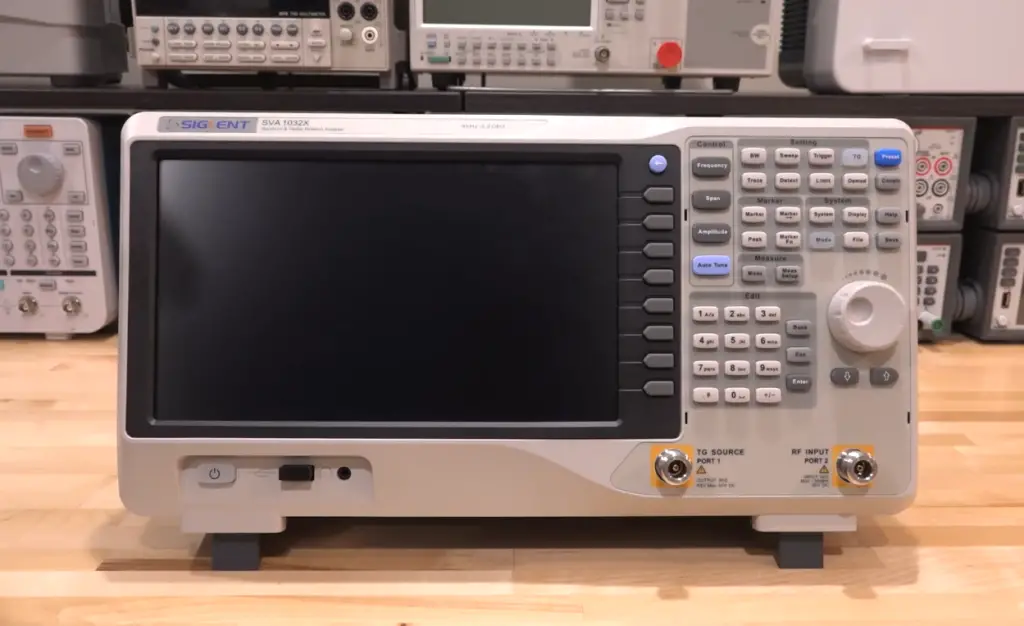
Swept-tuned spectrum analyzers sweep through an entire frequency range, in either linear or nonlinear fashion, and measure the amplitude of each frequency component along the way. Swept-tuned spectrum analyzers are typically used to measure large spans of bandwidths at one time, such as an entire television channel. Sweeping is done at a predetermined rate based on the sensitivity setting, which allows for more precise measurements of signals at lower frequencies. This type of instrument can be used to detect small changes in signal levels over time, as well as providing better accuracy than swept-tuned instruments.
Real-time spectrum analyzers
Real-time spectrum analyzers measure signals in short bursts at high speeds, often referred to as “burst mode.” These instruments are used to quickly measure the amplitude of a signal and can be used for monitoring a signal over time. Real-time spectrum analyzers have the advantage of not needing to sweep through an entire frequency range before providing an answer.
There are actually several subtypes of real-time spectrum analyzers, such as Fourier (or FFT) analyzers and vector signal analyzers.
They use a digital signal processing technique called the Fast Fourier Transform (FFT) to break down a signal into its individual frequency components.
They can analyze a wide variety of signals including analog, digital, audio and video signals. The FFT spectrum analyzer has several advantages over the traditional swept-tuned version: it is faster and more accurate; its output is digital, allowing for easier storage and manipulation; it also offers many easy-to-use functions such as autoscaling and averaging.
With an FFT spectrum analyzer, you can easily measure signals from DC up to several GHz in frequency range. It is also capable of displaying both amplitude and phase data with high accuracy and time resolution. However, it is not suitable for measuring complex systems with multiple inputs or outputs since the measurement accuracy decreases when dealing with larger systems.
Vector Signal Analyzers (VSA) are specialized tools used to analyze and measure the spectral characteristics of a signal. VSSA’s are useful for both research and commercial applications, such as in wireless communications or audio technology.
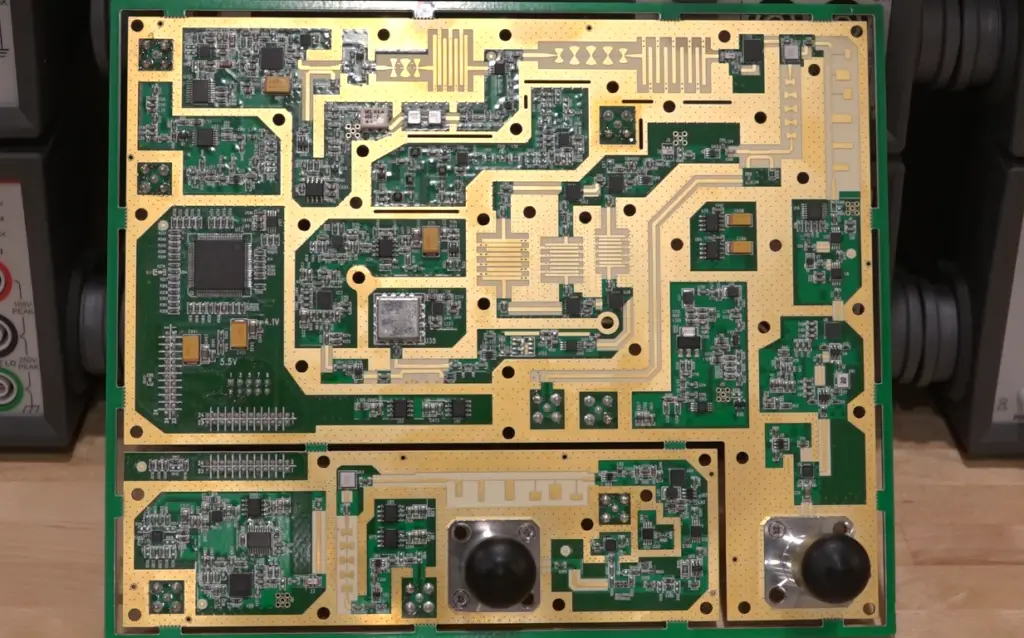
These spectrum analyzers combine a superheterodyne technology and a wide range of features to measure the power of different frequency components in a signal. They provide both time and frequency domain displays, enabling users to observe how signals vary over time.
Applications of spectrum analyzers
Spectrum analyzers can be used for a variety of tasks, such as troubleshooting radio systems, product design and development, EMC testing, and monitoring. For example, spectrum analyzers are used to measure the power level of signals in a given frequency range—such as those emitted from a transmitter or received by an antenna. This is especially useful for checking functionality and compliance with governmental regulations. Spectrum analyzers can also be used to detect any harmonic or spurious energy that may exist within the desired frequency range. [1], [2], [3], [4]
Network Analyzers in General
They are used to monitor the network parameters and measure complex parameter sets such as impedance, return loss, phase shift, coefficients and group delay. Network analyzers are available in a variety of models and sizes, ranging from portable handheld instruments to full-sized rack-mount systems that measure high frequencies and large amounts of data.
Network analyzers operate by sending out a signal at various frequencies and then measuring the response of the network under test (NUT). This measurement is known as S-parameters (or scattering parameters) because it measures how signals “scatter” or change when they pass through a device or circuit. The measurements are then used to calculate complex values such as impedance, gain, etc., which allow engineers to characterize networks accurately.
Unlike spectrum analyzers, which are limited to measuring signal power across a specified frequency range, network analyzers can measure signal characteristics over a wide frequency range or even an entire band of frequencies at once. This means that they can be used to measure both small-signal properties and large-signal properties simultaneously.
Types of network analyzers
Just like spectrum analyzers, there are several different types of network analyzers available on the market today. The type of network analyzer you need will largely depend on the application for which it is being used.
These two types are Scalar Network Analyzers (SNA) and Vector Network Analyzers (VNA).
Scalar Network Analyzers
Scalar network analyzers, also known as scalar impedance meters or simply SNAs, are the most common type of network analyzer. These instruments are designed for measuring simple electrical characteristics such as impedance and return loss. They are often used to characterize single-ended circuits such as transformers, filters and amplifiers.

SNAs typically have a lower frequency range than other types of network analyzers and they are limited in their ability to measure large-signal properties. Despite this limitation, however, they can still provide accurate measurements at high frequencies if the signal is small enough and the impedance is not too high.
Vector Network Analyzers
They measure both magnitude and phase, which allows them to calculate complex parameters. VNAs are ideal for measurements involving frequency-dependent devices such as filters, amplifiers and mixers.
Because vector network analyzers measure both magnitude and phase, they can be used to characterize components with high accuracy regardless of whether their properties vary with frequency or not. Vector network analyzers are typically used in research laboratories or by engineers performing advanced development work on electronic components.
Applications of network analyzers
Network analyzers are used in a variety of industries, such as telecommunications, medical electronics, automotive and aerospace.
In general, they are used to measure the performance of active or passive electrical components like filters and amplifiers. They are also used to analyze the frequency response of antennas, cables and transmission lines.
Additionally, network analyzers can be used for research & development purposes in order to characterize new components or materials. They are also often employed in production facilities to ensure that all manufactured products meet quality control standards.
Finally, network analyzers can also be used in research laboratories to test the performance of new components or circuits. In addition, network analyzers can be used for debugging signal integrity issues in complex electronic designs. The use cases for network analyzers are virtually limitless. [1], [2], [3], [5]
Main Differences Between Spectrum and Network Analyzers
As you can see, both are incredibly similar, but there are a few major differences between them. In this section, we’ll outline the main differences between spectrum analyzers and network analyzers.
Accuracy
When it comes to making accurate measurements in radio frequency (RF) applications, the choice of whether to use a spectrum analyzer or a network analyzer is critical. While both instruments can measure the networks, they have different capabilities and advantages that make them better suited for certain types of measurements.
The accuracy of both spectrum and network analyzers varies depending on the make, model, and type. Generally speaking, however, network analyzers tend to have more accurate readings than spectrum analyzers. This is because they boast a vector error correction feature. This feature uses multiple sources of data to determine the most accurate readings. After all, a network analyzer is intended to measure more than just power—it’s also meant to measure the reflection coefficient, return loss, and VSWR of a device. Hence more detailed measurements are a must.
Frequency Sweep or Power Sweep
Another difference is that spectrum analyzers measure using a frequency sweep, while network analyzers measure using a power sweep. As mentioned previously, swept-tuned spectrum analyzers move through an entire frequency range and measure the amplitude of each frequency component along the way. Network analyzers, however, measure in steps and check the power levels at each step—which makes them ideal for measuring narrow-bandwidth signals such as those found in cellular networks.
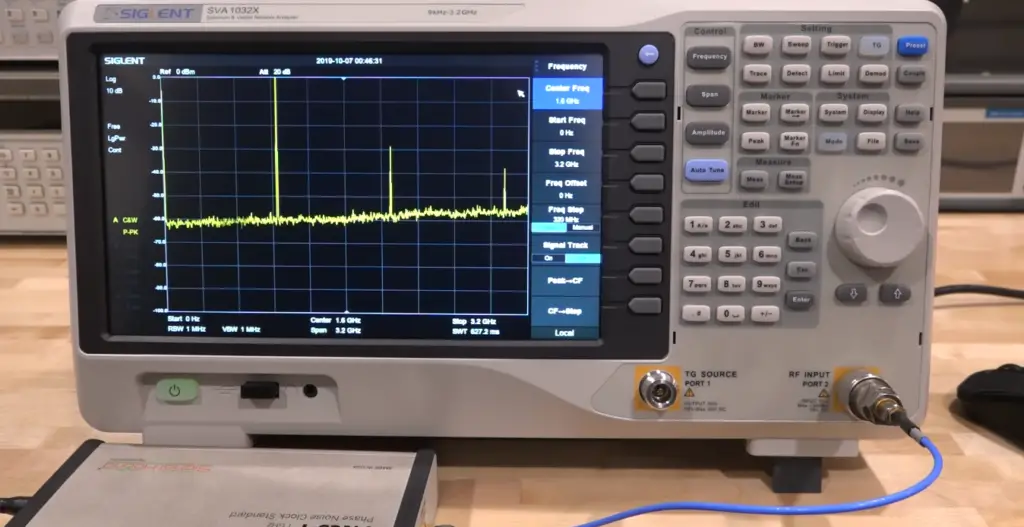
Bandwidth
Bandwidth can be thought of as the maximum amount of data that can be transferred across a single channel over a period of time. It’s typically measured in kilobits per second (Kbps).
Spectrum analyzers usually have a wider bandwidth than network analyzers. This makes them more suitable for measuring broadband signals and wide-bandwidth devices such as Wi-Fi routers and RF transceivers. On the other hand, network analyzers are better suited for analyzing narrow-bandwidth devices such as antenna arrays or wireless data cards.
Result interpretation
The huge difference between the two is how their results are interpreted. Or how easy it is to understand what your results mean. With a spectrum analyzer, you’ll find it incredibly easy to place a marker on the display. But the results reading in itself can be a bit more difficult to interpret.
This is an exact opposite for network analyzers. Although it’s slightly more difficult to place a marker on the display, you can easily view the graphical results that will be simpler to understand.
Ease of use is incredibly important for many technicians, so this is definitely something to consider when deciding between the two.
Source incorporation
The main difference between spectrum and network analyzers is their ability to incorporate a signal source. Spectrum analyzers do not have a source incorporated, so they can demodulate and measure complex signals but cannot generate them. Network analyzers, on the other hand, do have a source incorporated and are able to measure both magnitude and phase of signals. They also can utilize a variety of techniques in doing so such as swept-frequency and vector network analysis.
Advanced error feature
A network analyzer has a more advanced error feature. This allows it to measure and compensate for errors that may be present in the system being measured. This makes them ideal for measuring complex components, such as filters, amplifiers and mixers.
Spectrum analyzers do not have this feature, so they are not suitable for measuring components with complex responses. [1], [2], [3]
Are These Two Interchangeable
Both have their own unique features that set them apart from each other, so they cannot be considered interchangeable.
A spectrum analyzer is an instrument that is specifically designed to measure the magnitude of a signal over a certain range of frequencies. It is typically used to measure the power and frequency of a signal. It displays its results graphically in the form of a spectrum or an amplitude vs. frequency plot.
A network analyzer, on the other hand, is an instrument that measures the S-parameters (a type of characteristic used in electrical engineering) of a device under test (DUT). It is used to measure the gain, phase shift, and other characteristics of a signal.
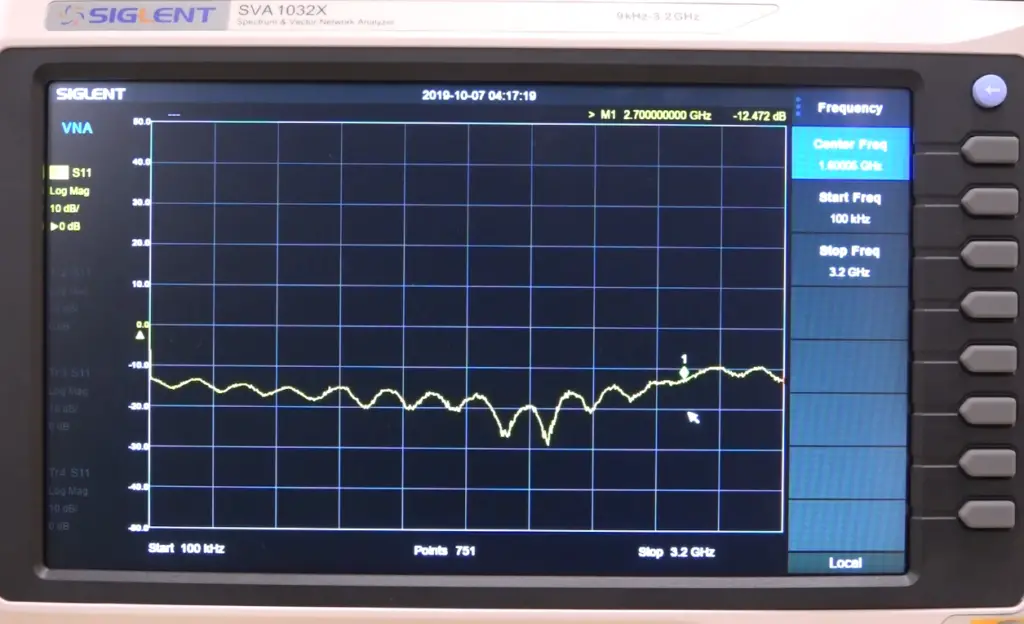
Each of these devices has its own features that make it more useful for a certain purpose. For example, a spectrum analyzer is better-suited for measuring the frequency response of a DUT, while a network analyzer is better at measuring the gain and phase shift of the same device.
So, one device won’t be able to do the job of the other. If you need to measure something specific, it is important to understand which instrument would be best suited for that task.
FAQ
What is a network analyzer used for?
A network analyzer is a type of test and measurement equipment used to characterize the performance of a device or system. Network analyzers are typically used to measure electrical parameters such as impedance, S-parameters (scattering parameters), return loss, gain, and insertion loss. They can also be used to analyze characteristics such as noise figure, group delay and frequency response.
Network analyzers are commonly used in many different industries where precise measurements are needed; some of these include aerospace, medical, automotive and communications. A typical application for a network analyzer would be for antenna testing in wireless communication systems.
What is the difference between Vector network analyzer and network analyzer?
Vector network analyzers and network analyzers, while similar in many ways, are two different types of instruments used for testing the characteristics of electrical networks. Vector network analyzers measure a variety of parameters—such as impedance, return loss, VSWR, gain or insertion loss—by sending out and measuring a signal that is reflected by the device under test (DUT). This type of analyzer also has the ability to measure both transmission and reflection parameters simultaneously. By contrast, a Network Analyzer measures only the amplitude (magnitude) of signals sent through an electrical circuit. It cannot measure phase information like a vector network analyzer can. As such, it is not suitable for applications where phase-related measurements are needed.
What are the types of network analyzer?
There are three main types of network analyzers: Scalar Network Analyzers (SNA) and Vector Network Analyzers (VNA).
Scalar Network Analyzers measure the magnitude of a signal response, such as gain, return loss, insertion loss, etc. These measurements are used to characterize the basic performance of an RF or microwave component. SNAs provide quick results but with limited frequency range and accuracy compared to more advanced instruments like VNAs.
Vector Network Analyzers measure both magnitude and phase information over a wide frequency range at high resolution. This type of instrument is also capable of performing other complex measurements such as impedance, scattering parameters, and group delays. VNAs are the most commonly used type of network analyzer as they offer a lot more flexibility than SNAs and TDRs.
Can I use a network analyzer as a spectrum analyzer?
No, you cannot use a network analyzer as a spectrum analyzer. While they may seem similar at first glance, these two instruments serve different purposes. A spectrum analyzer measures the amplitude of signals over a wide frequency range, while a network analyzer measures the transmission characteristics and impedance of networks or components.
Spectrum analyzers are typically used to measure the power level of an electromagnetic signal within a certain frequency range, whereas Network Analyzers are used to measure the electrical properties of electronic components and circuits such as gain, return loss and phase shift. Furthermore, Spectrum Analyzers are generally more suitable for measuring broadband signals with large dynamic ranges due to their wide frequency coverage and high sensitivity. On the other hand, Network Analyzers can perform a variety of measurements, including impedance and frequency response.
Useful Video: Spectrum Analyzer vs. VNA for Hobbyists: Replacing NanoVNA v2 Above 3GHz
Conclusion
As you can see, network analyzers and spectrum analyzers are both powerful pieces of test equipment, but each has its own set of strengths and uses. When deciding which to use for your application, it’s important to understand the differences between them and the tasks they can accomplish.
Strictly speaking, each of them is a completely different device with a completely different purpose. Spectrum analyzers are used primarily to measure the frequency characteristics of a signal, while network analyzers are designed to observe the network parameters and measure transmission lines and components.
Network analyzers are considered to be much more accurate and comprehensive than spectrum analyzers. They are also much easier to read even if placing a marker can be a bit time consuming.
That doesn’t mean that spectrum analyzers are obsolete, however. They are still widely used for tasks such as troubleshooting in broadcasting and navigation, monitoring the power of broadcast signals, testing electronic devices, etc.
Ultimately, the decision of which one to use comes down to your application and requirements. While spectrum analyzers are more cost-effective and can provide a quick overview of frequency ranges, network analyzers offer a much more detailed analysis that is accurate over a wide range of frequencies.
Hopefully this guide has given you a better understanding of the differences between these two devices and how they fit into your test strategy. With this knowledge in hand, you can make an informed decision about which device is best for your needs. Good luck!
References
- https://www.testandmeasurementtips.com/how-spectrum-analyzers-differ-from-network-analyzers
- https://vivadifferences.com/difference-between-spectrum-analyzer-and-network-analyzer/
- https://www.fullyinstrumented.com/spectrum-analyzer-vs-network-analyzer/
- https://rfmw.em.keysight.com/wireless/helpfiles/89600b/webhelp/Subsystems/concepts/content/concepts_types_spec_an.htm
- https://www.rfwireless-world.com/Terminology/SNA-Scalar-Network-Analyzer-vs-VNA-Vector-Network-Analyzer.html





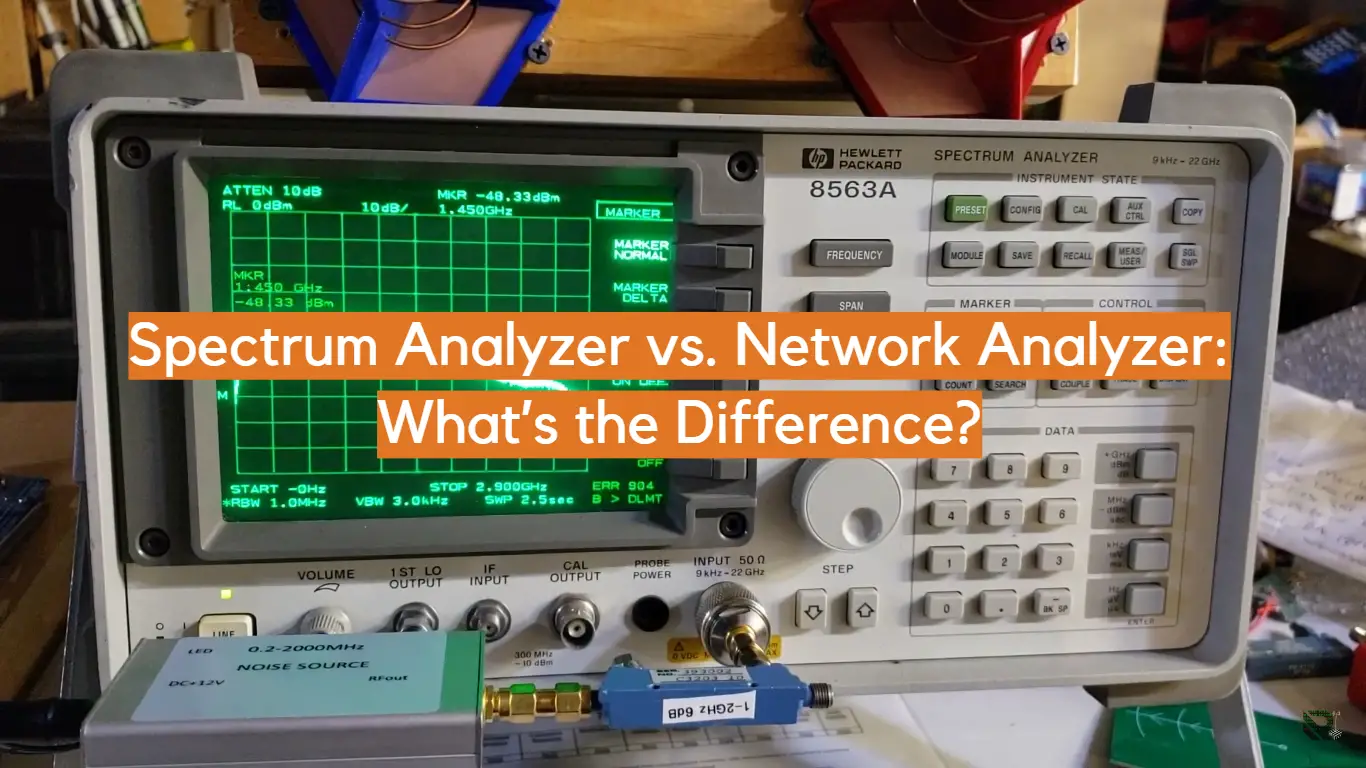








Leave a Reply